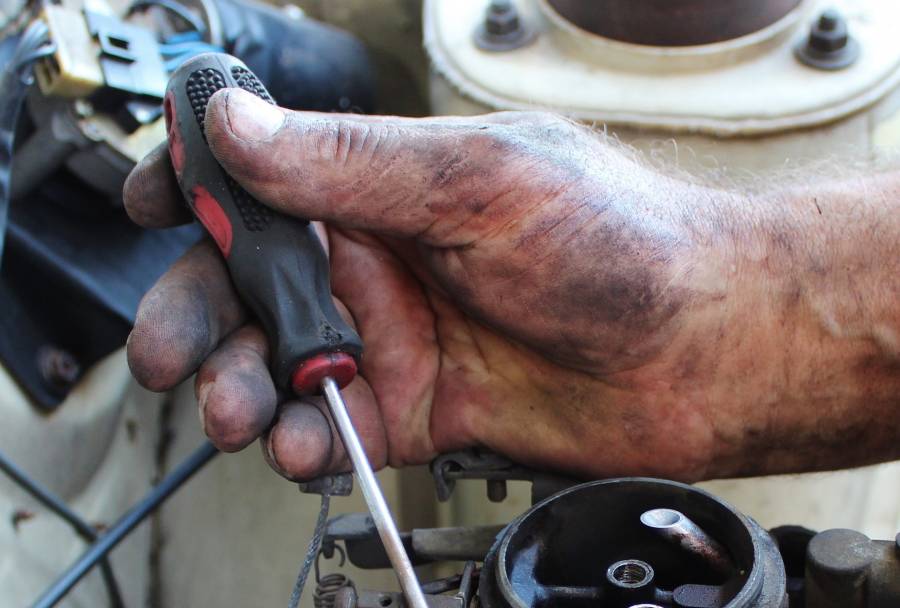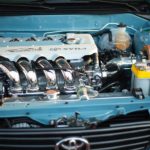Quick Navigation
A fuel pressure regulator is a vital component found in different forms on all vehicle engines. The function of a fuel pressure regulator is precise, as the name suggests.
It regulates the fuel pressure in the engine by adjusting it as needed. Although it’s found in all internal combustion engines, its form varies from one engine to another.

It is because every engine demands a different amount of gasoline. The fuel pressure regulator plays a vital role in fuel distribution to the engine.
Understanding how to adjust fuel pressure regulators is thus crucial to help take good care of your car.
Where Is A Fuel Pressure Regulator Located?
If your car is fitted with a fuel-injected gasoline engine, the fuel pressure regulator can be found at the end of the fuel rail.
You have to check out the supply line to the fuel injector and follow it to find the fuel regulator.
How To Adjust Fuel Pressure Regulator
The top fuel pressure regulator has a tiny Allen wrench bolt. It’s this wrench bolt that adjusts the fuel pressure.
All you have to do is loosen the nut and then turn it depending on what you need to do. A screw clock is used to raise or lower the fuel pressure.
For example, loosening the nut should raise the fuel pressure, while turning the regulator locknut should lower the fuel pressure.
If you want to raise the fuel pressure, turn the adjustment screw clockwise. But if you wish to lower the fuel pressure, you should turn the adjustment screw anticlockwise.
You can attach a fuel pressure gauge to the regulator’s pressure port to find out the pressure given by your regulator.
On the other hand, you can use a fuel pressure sensor to get a digital output.
One of the most important things you must do when adjusting the fuel pressure is to ensure the engine is at its lowest setting.
Before you decide to adjust the fuel pressure, you should make sure you have a pressure gauge in place to ensure you get the proper pressure.
The best place to fix the fuel pressure gauge is between the carburetor and the fuel pressure regulator. It is the only way to ensure the pressure gauge will give the correct pressure.
Steps On How To Adjust The Fuel Pressure Regulator
Any person who has installed aftermarket fuel pressure regulators has most likely experienced some issues of not having the proper fuel regulation.
Proper adjustment of the fuel pressure regulator is critical for maintaining proper fuel/air ratios and idle time, especially when there are many accessory loads such as the heater, headlights, etc.
Here is the most recommended method for adjusting the fuel pressure regulator.
- Turn off all car accessories, including the stereo, heater, and headlights
- Connect the fuel pressure measurement gauge to the cars fuel pressure port
- Allow the car engine to idle and then carefully check for any fuel leaks
- Turn the screw (clockwise or counterclockwise) to adjust the fuel pressure until the desired pressure is achieved
- Use an Allen Wrench to tighten the lock nut and then shut off the car engine
Optimum Pressure
It’s always important to recognize that fuel pressure is regulated by limiting the flow on a carbureted car and ensuring it runs at around 6 PSI.
However, injected vehicles ought to run at around 40 PSI. Nonetheless, you can contact the EFI system manufacturer or the carburetor manufacturer for suggestions on fuel pressure.
Tools Needed To Adjust Fuel Pressure Regulator
Fortunately, as you can see, the procedure of adjusting the fuel pressure regulator is pretty straightforward.
Furthermore, you don’t need to have many tools to do this. You’ll only need two things, a 7/32 Allen Wrench and a 5/8″ box end wrench.
You’ll need the 5/8″ box end wrench to loosen the locknut and a 7/32 Allen Wrench to swivel the adjustment screw.

As mentioned earlier, turning the screw clockwise increases the fuel pressure, while turning the screw counterclockwise lowers the pressure.
We strongly recommend that you only make minor adjustments.
You shouldn’t risk turning the adjustment screw all the way. It is because it could damage the regulator.
Important Tip
The changes made to the fuel pressure might also change the level requirements of the fuel bowl.
You need to carefully check and cautiously adjust the fuel bowl levels to maintain fuel delivery and control.
Different Types Of Fuel Pressure Regulators
While some fuel pressure regulators utilize mechanical diaphragms to optimize fuel pressure, modern fuel regulators are electronic and function differently.
A fuel pressure regulator responsible for supplying fuel to the engine is an essential component and should be regularly adjusted to maintain a perfect working order.
A bad fuel pressure regulator might influence the engine’s performance.
Keep in mind that a significant pressure regulator can take more flow. For this reason, it can keep a high pressure and maintain the 1:1 fuel/air ratio.
It’s also important to note that some fuel pressure regulators can easily handle different alcohol fuels like ethanol or methanol.
Cheap fuel pressure regulators often suffer broken diaphragms after constant exposure to these types of alcohol fuels.
If the diaphragm in the regulator breaks, it can ultimately damage the engine.
Replacement or repair of a car engine is costly, so you should ensure the fuel pressure regulator is in perfect working condition.
Indications Of A Damaged Fuel Pressure Regulator
Here are some of the signs you should check to determine whether your car has a worn-out fuel pressure regulator.
If you notice any of these signs, you should immediately address the issue.
- Black spark plugins: You should remove the spark plug to check whether the end has soot. If it’s sooty, then this means your fuel pressure regulator needs replacement.
- Engine stalls or runs poorly: If the engine is not running correctly or starts to idle poorly, this can be a symptom of a damaged fuel pressure regulator. The same applies if your car stalls occasionally.
- Black smoke: If you realize that your car tailpipe is producing black smoke, you might be dealing with a bad fuel pressure regulator.
- The smell of gasoline on the dipstick: If you notice any smell of gasoline on the dipstick, then it could be a symptom of the regulator failing.
Conclusion
If you checked the fuel pressure gauge and feel the need to adjust the fuel pressure, you should consider following the advice we’ve given in this post.
All you have to do is loosen the lock nut and then use an Allen Wrench to adjust the fuel pressure regulator.
Keep in mind that some fuel pressure regulators aren’t adjustable. It’s only the races regulators that can be adjusted.

Kevin has been hanging around cars and automobile magazines since he knew what a car is. He grew up in his father’s 1995 Mercedes E320 Wagon and Volkwagon Phaeton W12 2004. He rides his first car, a manual 1979 Porche 911SC.
Currently, he owns an Acura Integra GS-R. During his childhood, he showed a keen interest in how things actually work and fix them. This passion transforms into his eternal love for cars and bestows him an ideal position in one of the leading automobile companies; whenever he finds time, he takes out his Acura and opts for the longest possible route to find hidden wholesome pleasure in a road trip.
Want to read some of the articles written by Kevin? Head to our blog section to find out all the articles written by Kevin.






